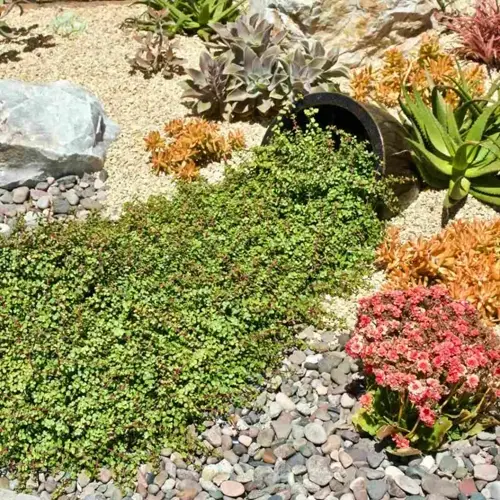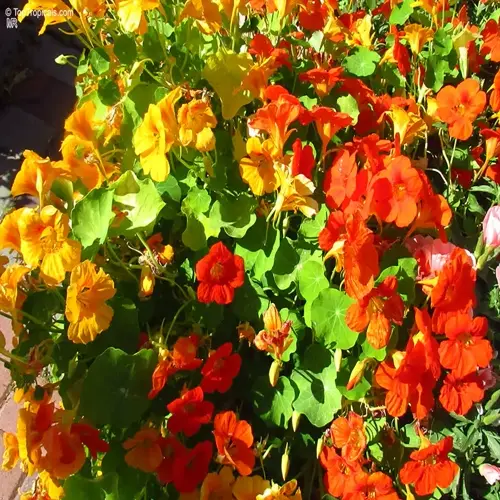The Complete Guide to Hardening Off Seedlings

Written by
Julia Anderson
Reviewed by
Prof. Martin Thorne, Ph.D.The hardening of seedlings is a gradual process in which seedlings are prepared for outdoor environmental conditions over the period of 7 days.
You can use shade cloth for controlling sun exposure and cold frames for controlling wind exposure and wind damage.
Each plant type has a specific upper/lower temperature threshold that they will tolerate during the hardening process.
Be aware that sun exposure during the critical first three hardening days can be damaging or fatal, so avoid providing midday sun exposure during this time.
Research shows that UV-enhanced grow lights can reduce time outdoors for hardening by 50% if used properly.
Establishing daily routines will reduce transplant shock and increase the chances of seedling survival.
Article Navigation
Hardening off seedlings means gradually adapting them to outdoor conditions from the indoor environment in which they have grown. Inside, the plants are shielded from sunlight and wind. Therefore, their leaves are thin and their stems are weak. A sudden exposure to outside conditions produces a shock that may be severe enough to kill the plants.
If you do not harden off your plants, they get sunburned leaves. Their stems break off in the wind. They all have transplant shocks. I learned this the hard way after losing some tomato plants one spring. Now I never let a spring go by without hardening off.
This article explains the correct way to harden off. We outline timelines for hardening off various plants. We provide some tools that you can use to protect your seedlings. We also show common mistakes many gardeners make. Follow these techniques to prepare your plants for healthy transplants.
Step by Step Process
On Day 1 begin hardening off seedlings by placing them in a sheltered place away from wind. They need shade for the first hour or so. No direct sunlight! Bring the plants indoors if the temperature goes below 45°F. Watch for wilting.
On days 2 and 3, increase exposure to two hours and add early morning gentle sun if the sun feels intense, use a 30% cloth. Never expose plants to the fierce midday heat. Check the leaves daily for signs of scorching.
For Days 4 to 6, the subject is exposed to four hours of sun each day. Wind exposure to strengthen the stems can be introduced. Begin overnight stays in good weather when the temperature is above 50°F. Water the roots thoroughly before leaving them outside.
Day 7 signifies readiness for full outdoor exposure. Plants are capable of withstanding six hours' exposure to full direct sun without protection. They can endure a mild wind as well as drops in temperature down to 45°F. If rains or cold spells occur, this program should be adjusted by suspending progress.
Essential Tools and Protection
Protect seedlings from intense sunlight with shade cloth. A shade cloth with a 30-40% shading capacity will block the sun's intense rays in those critical first few hot days. Hang or drape the shade cloth over the hoops to allow for air circulation. Using a shade cloth produces filtered light similar to that of heavy clouds. For the shade cloth, I prefer all-polypropylene fabric, which offers great durability and breathability.
Row covers protect plants from two elements: frost and sunlight. The leaves of Agribon winter covers will protect down to 28°F and reflect 30% of the light. Layer them when an unexpected cold spell occurs. Hold them down with soil or pins. Rain goes through them without needing to be removed.
Keep an eye on soil temperatures with a soil thermometer. Take temperatures at the root level every day. Plants in warm seasons require a minimum soil temperature of 50°F. Insert the probe 4-6 inches deep. A dial is okay, but an electronic one provides greater accuracy. Never leave seedlings outside in temperatures below 45°F at night.
Cold frames give us adjustable protection. Gradually open the vents over several days to allow for a gradual adjustment. Polycarbonate panels serve as windshields while maintaining 90% light transmission. You can even use cold frames on sensitive plants, such as cucumbers. It features built-in handles, making it easy to carry.
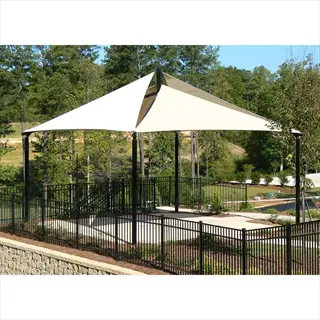
30-40% Shade Cloth
- Blocks 30-40% of direct sunlight to prevent seedling sunburn during the critical initial hardening days
- Draped directly over plants or suspended on hoops above seedlings for optimal coverage and protection
- Lightweight polypropylene fabric allows excellent air circulation while effectively filtering intense UV rays
- Reduces light intensity to levels equivalent to heavy cloud cover conditions for gentle acclimation
- Gradually increase sun exposure by systematically removing layers after three to five days of use
- More effective than relying on natural shade alone due to precise and adjustable light reduction capabilities
Agribon Row Cover
- Provides dual-function protection with 30% shade plus frost resistance down to 28°F (-2°C)
- Allows 85-90% light transmission while diffusing harsh direct sunlight into gentler, scattered rays
- Lightweight fabric can be layered for customized protection levels during unexpected weather changes
- Creates a protective microclimate that effectively buffers against damaging winds and sudden temperature drops
- Secured around seedling beds with landscape pins or by burying edges in soil for maximum stability
- Permeable material structure allows rainwater irrigation without removal during light to moderate showers
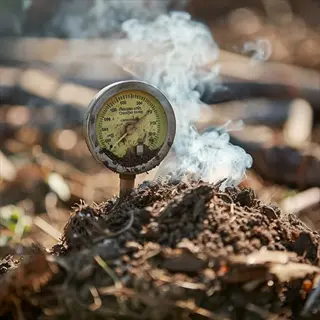
Soil Thermometer
- Measures ground temperature at root level where seedlings are most vulnerable to temperature fluctuations
- Determines safe transplant timing thresholds with minimum 50°F (10°C) requirement for warm-season plants
- Probe-style design inserts four to six inches (10-15 cm) deep into planting area for accurate readings
- Analog dial models feature easy-to-read temperature scales while digital versions offer precise measurements
- Critical verification tool for checking overnight lows before leaving plants outside for hardening periods
- Prevents cold damage by confirming soil warmth consistently exceeds species-specific temperature thresholds

Watering Can with Fine Rose
- Fine-holed nozzle creates a gentle shower pattern that closely mimics natural rainfall conditions
- Prevents soil disruption and seedling stem damage caused by harsh water streams from standard nozzles
- Two-gallon (7.5-liter) capacity significantly reduces refill frequency during critical monitoring periods
- Extended long spout reaches seedlings without requiring stepping into delicate planting bed areas
- Essential for maintaining perfectly consistent moisture levels during the outdoor transition phase
- Durable construction using galvanized metal or UV-resistant plastic ensures seasons of reliable service
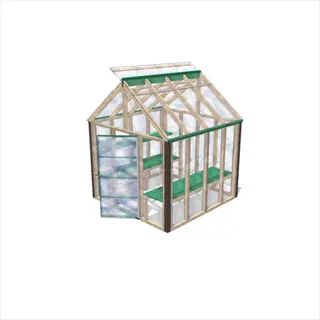
Portable Cold Frame
- Creates a fully protected microclimate environment with adjustable side ventilation control panels
- Polycarbonate panels transmit up to 90% of natural light while blocking wind chill and cold drafts
- Lifts four to six inches (10-15 cm) for customizable air circulation management during daytime use
- Hinged lid design enables gradual hardening by progressively increasing daily opening durations
- Lightweight aluminum frame incorporates convenient carrying handles for effortless garden mobility
- Provides reliable overnight frost protection when temperatures approach plant-specific freezing points
Plant-Specific Strategies
Cold-tolerant plants: Kale, broccoli, and other similar plants can survive temperatures down to 30F. Start exposing them to sun on the 2nd day (morning sun). It requires only 7 days of hardening. Use row covers only for temperatures below 28F. Watch for bolting with cold snaps.
Tender plants, such as tomatoes, require at least a minimum temperature of 50°F. On the third day, expose them to 30 minutes of morning sunlight. The full hardening takes 10-14 days. Use a 30% shade cloth for initial protection. The purple stems signal that the plants are experiencing cold stress.
Tender crops such as cucumbers require extra attention. Wear above 60°F during the day and at night. During the first four days, use 40% shade cloth. The maximum time for hardening is seven days. If they are not kept constantly moist, they wilt rapidly.
Leafy greens thrive in cool weather but benefit from afternoon shade. Root vegetables need consistent moisture and protection from wind. Group plants together that like similar temperatures for efficiency; extra work planting may prevent sensitive varieties from ceasing growth.
Cold-Hardy Plants (Kale, Broccoli)
- Tolerate temperatures as low as 30°F (-1°C) during hardening process
- Begin sun exposure earlier than tender plants - can handle morning sun from day 2
- Complete hardening in 7-10 days with overnight stays after day 4
- Require minimal frost protection; use row covers only below 28°F (-2°C)
- Transplant 2-4 weeks before last frost date in most climates
- Monitor for bolting if exposed to prolonged cold snaps during hardening
Tender Plants (Tomatoes, Peppers)
- Require minimum 50°F (10°C) temperatures throughout hardening period
- Progress sun exposure slowly - start with 30 minutes morning sun on day 3
- Need 10-14 day hardening period with overnight stays only above 50°F (10°C)
- Use 30% shade cloth for first 5 days to prevent leaf scorch
- Transplant only after last frost date when soil reaches 60°F (15°C)
- Watch for purple stems indicating cold stress during early hardening days
Sensitive Crops (Cucumbers, Melons)
- Limit hardening to 7 days maximum to prevent growth stoppage
- Maintain temperatures consistently above 60°F (15°C) day and night
- Require 40% shade protection for first 4 days of hardening
- Use portable cold frames for wind protection and temperature stability
- Transplant when nighttime temperatures reliably exceed 55°F (13°C)
- Avoid water stress - these plants wilt quickly during acclimation
Leafy Greens (Lettuce, Spinach)
- Handle cool temperatures well - down to 35°F (2°C) with protection
- Susceptible to sun scorch; require afternoon shade throughout hardening
- Benefit from misting during warm days to prevent bolting
- Harden for 7-10 days with overnight protection below 40°F (4°C)
- Transplant in early spring 2-3 weeks before last frost date
- Use floating row covers to prevent flea beetle damage during hardening
Root Vegetables (Carrots, Beets)
- Tolerate temperatures down to 40°F (4°C) during hardening period
- Require consistent moisture to prevent woody root development
- Harden for 7 days with gradual sun exposure increase
- Protect from wind which can damage delicate foliage during hardening
- Direct sow preferred but transplant at 4-leaf stage if started indoors
- Use seedling collars to prevent root maggot damage after transplanting
Common Mistakes to Avoid
Placing seedlings in full midday sun will scorch their leaves. The first three days, they should have morning sun only until ten o'clock. Take the scalded plants to the shade immediately. Cut off the burned leaves. Wait two days before hardening them. I lost some pepper plants this way last season.
Overnight freezing temperatures below 40° F will destroy seedlings. Ice crystals break plant cells, resulting in black stems. Bring plants indoors immediately, and cut all damaged areas. Check forecasts hourly. Use row covers to protect seedlings when temperatures drop to 45° F for safety.
Plants suffer from stress and slower growth if you miss days. Set reminders on your phone to maintain consistency in your morning routines. If you miss sessions of that routine after a three-day break, you will have to restart this process. If the wind is over 10 mph, it will break stems. Plants must be covered at once with cold frames.
Overwatering can lead to root rot in outdoor plants. Feel the ground at least one inch deep before watering. Allow the soil to dry out between waterings. Hardening too quickly, less than seven days, causes high mortality. Follow the minimum times. Allow extra days for the delicate plants.
Midday Sun Exposure
- Placing seedlings in direct sun between 10 AM-4 PM during first 3 days causes severe leaf scorch
- Ultraviolet intensity peaks midday, damaging tender indoor-grown foliage
- Corrective action: Immediately move to shade; trim burned leaves; delay hardening 2 days
- Prevention: Use morning-only sun (before 10 AM) during initial hardening phase
Ignoring Frost Warnings
- Leaving seedlings outdoors overnight below 40°F (4°C) causes cellular damage
- Ice crystals form in plant tissues, leading to blackened stems and collapse
- Corrective action: Bring indoors immediately; trim damaged parts; wait for warmer forecast
- Prevention: Check hourly forecasts; use row covers below 45°F (7°C)
Inconsistent Daily Routine
- Skipping days or varying exposure times stresses seedlings' adaptation systems
- Erratic hardening causes stunted growth and delayed root development
- Corrective action: Restart hardening schedule from day 1 after 3-day rest period
- Prevention: Set phone reminders; maintain consistent morning hardening routine
Over-Watering During Hardening
- Saturated soil in outdoor conditions promotes root rot and fungal diseases
- Reduced indoor evaporation rates continue while plants adjust outdoors
- Corrective action: Allow soil to dry; apply fungicide if mold appears
- Prevention: Check soil moisture twice daily; water only when top inch is dry
Neglecting Wind Protection
- Exposing seedlings to winds over 10 mph causes stem breakage and dehydration
- Wind strips protective waxy cuticles before they fully develop
- Corrective action: Shelter immediately; mist foliage; provide extra shade 48 hours
- Prevention: Use windbreaks like cold frames; avoid hardening on windy days
Rushing the Process
- Compressing 7-day schedule into 3 days causes systemic shock and high mortality
- Accelerated exposure prevents proper cuticle and cellulose development
- Corrective action: Discard severely damaged plants; restart with new seedlings
- Prevention: Follow minimum 7-day schedule; add days for sensitive plants
Time-Saving Workarounds
Use UV-enhanced grow lights indoors to prep seedlings for sun exposure. These special lights mimic natural UV rays that thicken the cuticles of plants. Place them 6-12 inches above the plants and provide them with 14 hours of exposure per day. This will effectively cut the time it takes plants to harden off outdoors in half. Tomatoes and peppers, especially, will benefit from this.
Plant on overcast days or when light rain is falling; this way, one can avoid the need to apply sun protection early. Cloud cover naturally provides diminished intensity of sunlight. When transplanting, make arrangements for late afternoon to avoid the hottest intensity of UV light. Consult the five-day forecasts to determine favorable planting windows, eliminating the need for daily adjustments.
Items usually have their own designated areas; for example, you will group all cold-hardy vegetables as a batch. You will put all the tender crops, such as tomatoes, in their own separate batch. Make sure you label trays with their start date and requirements clearly marked. Batching greatly reduces your daily workload!
Install permanent 30% shade cloth over the garden beds. It allows you to transplant some plants without hardening off. Slowly remove after 7 to 10 days after planting. Uses it for lettuce and saves one week of preparation time.
UV-Enhanced Grow Lights
- Use LED grow lights with UV diodes during indoor seedling phase
- Provides spectrum equivalent to outdoor sunlight for 14-16 hours daily
- Reduces outdoor hardening time by 50% for tomatoes and peppers
- Position lights 6-12 inches above seedlings for optimal intensity
Strategic Weather Planting
- Transplant during overcast periods or light drizzle conditions
- Cloud cover naturally reduces sunlight intensity by 40-60%
- Schedule planting in late afternoon to avoid peak sun hours
- Monitor 5-day forecasts to identify ideal planting windows
Batch Processing by Hardiness
- Group plants with similar temperature tolerances together
- Process all cold-hardy vegetables simultaneously for efficiency
- Handle tender and sensitive crops in separate batches
- Label trays clearly with hardening start dates and requirements
Permanent Shade Solutions
- Install 30% shade cloth structures in planting areas
- Allows direct planting without prior hardening for some plants
- Remove shading gradually over 7-10 days post-transplant
- Combine with temporary row covers for added protection
Cold Frame Transition
- Use portable cold frames as intermediate hardening stations
- Open vents progressively over 5 days to increase exposure
- Provides automatic wind protection and temperature moderation
- Eliminates daily transport between indoor and outdoor areas
5 Common Myths
Seedlings grown under artificial lights do not require hardening off outside
While grow lights supply the essential spectrum for their growth they do not give the maximum intensity of sun which includes certain ultraviolet rays required for cuticle formation. Environmental conditions are the continuous evolution of windy and temperature changes and insects to which the indoor environment can not be made to conform. If plants are not gradually exposed to these things they will suffer from severe transplanting shock and sunburn when taken out into the sunshine.
Overcast days eliminate the chance of sunburn complications when hardening off
Since the clouds diffuse the light but do not entirely obstruct it, there is decreased visible light but little effect on ultraviolet radiation, which penetrates through, at nearly 80% intensity. The seedling has little or no cuticle cell protection from the burning rays of radiation (ultraviolets B) during this stage. This misconception is responsible for the excessive foliage burn some gardeners notice, for they leave seedlings outdoors too many hours during cloudy days and think the plants are protected from sun exposure.
Every plant requires exactly 14 days of hardening off before transplanting
Time required for hardening varies enormously in different kinds of plants, such as the hardy vegetables, which require only 7 days of hardening, while delicate plants, such as tomatoes, require perhaps from 10 to 14 days. The duration of the hardening process is influenced, of course, by such factors as temperature, wind strength, and natural conditions. If a rigid schedule be made for all plants regardless of varieties, there will be underhardening or stress incurred in overexposure.
Cutting down on water during the hardening off period toughens the seedlings faster.
Less water is an irreversible drought stress which injures the roots and suppresses growth. The hardening of seedlings depends on gradual exposure to the environment during which time adequate soil moisture is supplied so as to allow for the necessary metabolic changes to take place. This belief persists, however, in spite of the evidence that the dehydrated seedlings resulted in thinner cell walls and thinner cutin layers which made the seedlings more susceptible to outdoor conditions.
The hardening process is mainly related to exposure to sunlight.
Successful hardening works on a number of environmental influences including wind resistance, temperature fluctuations and humidity changes. Wind exposure enhances the cellulose development, resulting in stronger stems. Temperature fluctuations assist customers in developing greater cellular resistance. In not taking all these factors into consideration it results with seedling which is made soft and difficult to handle due to susceptibility to wind damage and temperature shock even if they have adapted to sunlight.
Conclusion
Hardening off seedlings is a must if you want to be successful in the garden this spring. If you skip this, you risk losing those plants you've nurtured for weeks. Hardening off seedlings prepares and helps strengthen your plants for the outdoor growing conditions. I have seen weak and sickly plants year after year transformed into beautiful, thriving plants after they have been hardened off.
Acclimation prevents transplant shock and sunburn. It develops thicker leaves and stronger stems. Plants become established in beds more quickly with a strong root system. Because of these benefits, every minute spent hardening is worth doing for healthy growth.
Begin the seven-day schedule straight away. Utilize the individual plant schedules and make use of shade cloth and similar materials. Adjust to weather conditions, but stay true to the basic structure. You will be rewarded with vigorous seedlings after transplanting.
Prepare your seedlings by using this comprehensive article. Share your hardening-off experience with fellow gardeners. Watch your plants flourish, not suffer. Begin the process in the morning to achieve the best garden yet.
External Sources
Frequently Asked Questions
What is the purpose of hardening off seedlings?
Hardening off gradually transitions indoor-grown seedlings to outdoor conditions by exposing them to sunlight, wind, and temperature fluctuations. This process thickens plant cell walls and develops protective cuticles, preventing transplant shock while increasing survival rates and overall plant resilience.
How long should seedlings undergo hardening off?
The hardening off period typically spans 7-14 days depending on plant type. Hardy vegetables like kale require 7 days, while tender plants like tomatoes need 10-14 days. Begin with 1-2 hours of shade exposure, increasing daily until plants tolerate full sun.
Can seedlings be hardened off in shady areas?
Shade is essential during initial hardening days. Start seedlings in full shade or dappled light for the first 2-3 days before introducing morning sun. Use 30-40% shade cloth to filter intense rays while allowing necessary UV exposure for cuticle development.
How do you prevent sun damage during hardening off?
Avoid midday sun between 10 AM-4 PM during the first 3 days. Use shade cloth, cold frames, or morning-only exposure. Cloudy days still require protection since UV rays penetrate clouds. Gradually increase light intensity to prevent leaf scorch and cellular damage.
What temperature is unsafe for hardening off?
Temperatures below 40°F (4°C) risk frost damage for most seedlings. Tender plants like peppers require minimum 50°F (10°C). Use soil thermometers to monitor root-zone temperatures and row covers for protection when temperatures approach critical thresholds overnight.
How does wind affect seedlings during hardening?
Winds over 10 mph can break stems and strip protective cuticles. Use windbreaks like cold frames or position seedlings against structures. Gradually introduce breeze to strengthen stems without damage. Never harden off during excessively windy days to prevent dehydration and structural damage.
Can grow lights reduce hardening off time?
UV-enhanced grow lights shorten outdoor hardening by 50% when used during indoor growth. They mimic natural sunlight spectrum for 14-16 hours daily, stimulating cuticle development. Position lights 6-12 inches above seedlings for optimal intensity before transitioning outdoors.
What are critical mistakes during hardening off?
Key errors include:
- Midday sun exposure during initial days causing leaf scorch
- Ignoring frost warnings below critical temperatures
- Inconsistent daily routines disrupting acclimation
- Over-watering promoting root rot
- Rushing the process in under 7 days
How do you harden off leggy seedlings?
Support leggy seedlings with stakes during hardening. Increase light intensity gradually using grow lights before outdoor exposure. Strengthen stems with gentle wind simulation from fans. Avoid sudden full sun which stresses fragile plants. Extend hardening period to 14 days for delicate specimens.
When are seedlings ready for transplant after hardening?
Seedlings are transplant-ready when they withstand full sun without wilting, show sturdy stems, and tolerate overnight temperatures. Cold-hardy plants transplant 2-4 weeks before last frost, while tender plants require soil temperatures above 60°F. Always check species-specific readiness signs.
